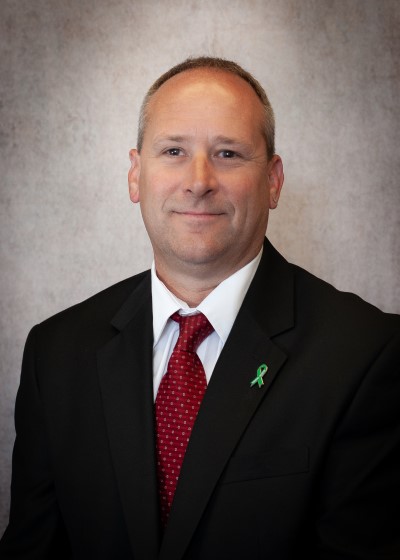How a hardware overhaul made much more telemedicine possible at a small health center

The outpatient building at the Central Kansas Mental Health Center.
Before the pandemic struck earlier this year, Central Kansas Mental Health Center in Salina, Kansas, had a small telehealth setup that started out of necessity over a lack of doctors available in its rural area.
THE PROBLEM
A few years ago, the mental health center contracted with physicians who lived in different locations to help with its doctor shortage. To facilitate the patient sessions, the center set up a couple of rooms with televisions, computers, webcams and so forth to conduct HIPAA-compliant Zoom and Vee-See sessions with the newly contracted physicians. This setup has worked well for the mental health center over the last few years.
But the center is now down to only two physicians working remotely via telemedicine, with two additional doctors onsite. Last year, it expanded to having one of its onsite physicians also doing telemedicine sessions with one of its other offices in a different city.
PROPOSAL
Central Kansas Mental Health Center’s telehealth setup was all done in-house by its IT staff. Using HIPAA-compliant Zoom sessions for secure video communications, it set up its own equipment to facilitate the sessions between doctor and patient.
"Having these doctors working via virtual care allows us to maintain high-quality care from qualified doctors without having the extra overhead of them moving to our small town."
Steve Swenson, Central Kansas Mental Health Center
The center installed TVs, speakers, computers and webcams in rooms with a few chairs to allow patients and families to come into the office to visit with the doctor via remote video. Patients would come into the office and go into the room, where the doctor was waiting via video.
MARKETPLACE
There are many vendors of telemedicine technology and services on the health IT market today. Healthcare IT News recently compiled a comprehensive list of these vendors with detailed descriptions. To read this special report, click here.
MEETING THE CHALLENGE
“When a patient comes in for a session, after checking in and the nurses getting vitals, they are taken to a room where we have telehealth technology,” said Steve Swenson, IT director at the Central Kansas Mental Health Center. “The doctor connects to the room via remote video from their location first thing in the morning and stays connected throughout the day so they are always ready for the next patient, just like if they were onsite and in person. When the session is done, the doctor messages the nurses to tell them they are finished, and the nurses get the patient and walk them out.”
RESULTS
With the TVs in the room instead of a small monitor, the patients get more of an in-person feel from the session, Swenson explained.
“They often say it’s just like the doctor was in the room with them,” he continued. “This setup works very well for those patients with anxiety about being in person with someone. The biggest successes we’ve noticed is that we’ve been able to continue seeing a high number of patients even without having a doctor onsite. It’s hard to find doctors to work in behavioral health in small rural locations. Having these doctors working via virtual care allows us to maintain high-quality care from qualified doctors without having the extra overhead of them moving to our small town.”
Having the ability for onsite physicians to do telehealth sessions with other office locations has allowed patients in those towns more access to care, he added. They no longer have to travel to see their doctors, he said.
“We have doubled the number of patients seen on a daily basis because of the telehealth capabilities,” he stated.
USING FCC AWARD FUNDS
Earlier this year, Central Kansas Mental Health Center was awarded $113,768 for laptop computers, monitors, tablets, mobile hot spots and other telehealth equipment to increase telehealth offerings for mental health services provided in patients’ homes to try and prevent the spread of the COVID-19 virus.
“We purchased TVs and sound bars to set up more individual telemedicine rooms for those patients who do not have Internet or video capability at home,” Swenson explained. “We also purchased TVs for our large meeting rooms to facilitate doing group sessions. This allows us to maintain social distancing for those who do come in and lets us clearly see all participants at once they join via video.”
The center’s business model has always been in-person, so 75% of its providers had desktop computers and were not mobile. The FCC funding allowed the center to purchase laptops, docks, monitors, speakers and webcams for all of the center’s providers, allowing them to be mobile and work from anywhere, performing telehealth sessions they were not doing before.
“We purchased more HIPAA-compliant Zoom licenses to allow our providers to do secure sessions instead of in-person,” he added. “We expanded our telehealth offerings to include case management, individual therapy sessions and family therapy, in addition to groups.”
The center also acquired tablets that it will be using as kiosks in its lobbies, admissions windows and out in the community to obtain patient signatures and do documentation remotely, along with hot spots that its providers are using to go to patients’ homes, sit on the porch and still do concurrent documentation while meeting with the patient at a safe distance.
Twitter: @SiwickiHealthIT
Email the writer: bill.siwicki@himss.org
Healthcare IT News is a HIMSS Media publication.

























